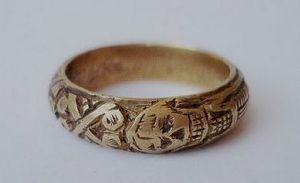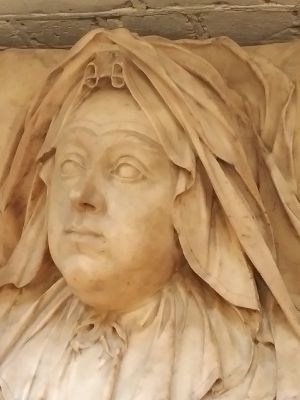The Clapham Society Local History Series — 38
Clapham funerals in the seventeenth century
By Timothy Walker
This article first appeared in the South London Press on 4 May 2018
(Entitled: Burying the cost)

Funerals could be extravagant affairs, occasionally costing as much as £700 – a massive sum for those days – and most wills contained instructions for the testator’s burial. The expense of a funeral was related to the number of people attending, and whether there was a big procession, possibly from their livery company hall to their chosen church. They might choose to be buried next to the grave of their spouse, parent or children, or in the family vault.
Puritans had campaigned against extravagant funerals, and some make clear that they wanted only a few people to attend, explicitly asking for privacy. Martin Lister’s will directed that his body should ‘without pomp and in a private manner be carried in a hearse attended by only one mourning coach to Clapham in Surrey and there be buried in the grave of his first wife’. Philip Lamb wanted to be buried ‘without the least show of pomp’; Thomas Juxon asked to be buried ‘decently and privately’; Edward Fryer wanted his burial to be ‘decent but free from excess in both numbers and charges’ and imposed a cost limit of £30. William Lethieullier asked for ‘as much privacy as decency will admit’, while Urban Hall asked to be ‘privately buried at Clapham according to such private instructions as I have left or shall leave for that purpose’. Sometimes the limit was set relatively high, usually by the rich who would have had obligations but did not want to seem extravagant. So Samuel Moyer, who was very wealthy indeed – his is the only will that explicitly leaves mourning for the coachman of each of his two brothers and his brother-in-law – set a limit of £300 and it seems likely that he intended to impose a limit rather than to spend excessively.

The majority left all funeral arrangements to the discretion of their executors, although one widow asked that she be ‘decently buried as I did my husband but not more’. The issue then turned on the extent of the money that should be spent on mourning, which could cover rings and mourning clothes. This could be extensive: Samuel Pepys’ will provided for over £100 to be spent on 129 rings carefully graded at twenty, fifteen or ten shillings each. Clothes could be a considerable expense, and women were more likely to leave money to buy mourning clothes. Mary Wright left her aunt and cousin (all three lived with her cousin’s father) £50 each to buy their mourning clothes, a very generous sum to judge from other wills, which usually left up to £5 for this purpose. One widow left £3 to her daughter to buy a gown but only forty shillings to her daughter-in-law for a ring.
We can get some idea of what a more lavish funeral might involve by looking at the testators who went out of their way to avoid it. William Brooke wanted his funeral to be ‘without escutcheons or any other pomp’ and Thomas Joliffe declared:
‘I will have no pall or escutcheon, nor will I have my corps carried into the church and I will that but one coach shall accompany the hearse thither and I positively order my executor that there be neither rings hatbands gloves nor anything given away at my funeral and that he doth not pay to the parson of the parish any more than the remaining parish dues.’

old Holy Trinity Church, Clapham
(now St Paul’s) in 1689, 22 years before she died.
Photo – Peter Jefferson Smith
However, there is one record of what must have been the most lavish Clapham funeral, that of the matriarch Dame Rebecca Atkins in 1711. She was the widow of the Lord of the Manor and her will gave a careful prescription:
‘And as to my Body I desire it may be buried in my Vault at Clapham which I have recently erected in the Church Yard there and that it may be carried thither in a hearse drawn by six horses and that there may be at my funeral twelve mourning coaches each drawn by six horses and as many poor women as I shall be years of age at the time of my death and that every one of the said women shall have a black bayes gown and petticoat with other necessaries that shall be of the value of forty shillings and my desire is that all other persons that shall be invited to my funeral by my executor amounting to the number of three hundred shall have every one of them a gold ring to the value of ten shillings and those persons that shall hold up the pall shall have scarves and gloves.’
Since she died a week after her seventy-seventh birthday, the funeral costs ran to more than £300, even before the coaches and hospitality. She had already commissioned memorials for her and her husband and they remain in St Paul’s church.